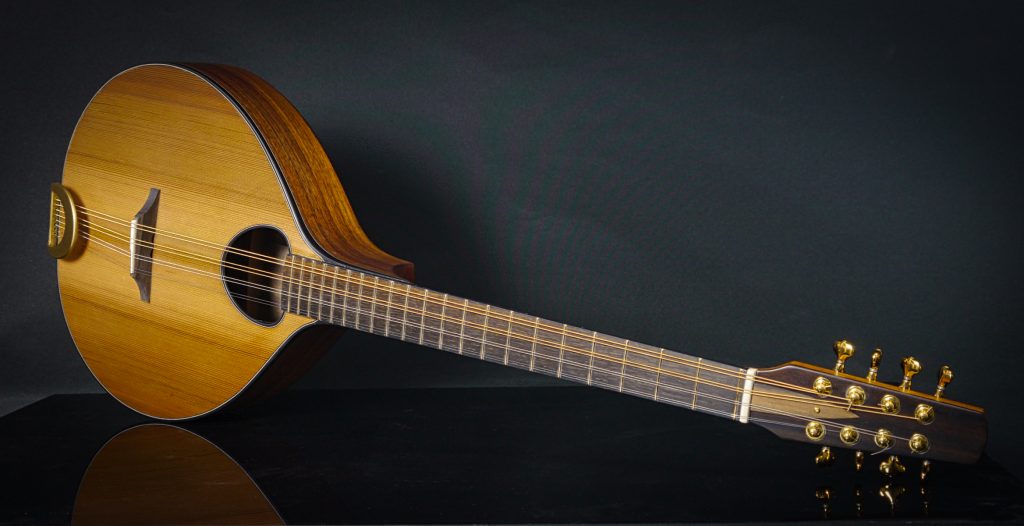A few weeks ago I sent out a newsletter. It was about my New Standard Model Irish bouzouki.

I don’t think I’ve ever had as many people contact me about an instrument. It was rather overwhelming. But it was also rather disappointing – people got in touch, then I sent them a price list. And in the majority of cases, I didn’t hear back. Now that is usually the case – I can only work with 15-17 clients a year, and around 300-400 people email me every year asking for a price list, but for this model, the amount of people who got in touch was significant.
That tells me for many, the new bouzouki is more than people can afford or want to spend.
Whilst it’s nice working with clients who want only the best, it is important to me to be able to offer less complex high performance work for players.
I’d like to be able to offer a more affordable bouzouki.
But when you’re making carved top bouzoukis the materials are expensive, and it takes time and skill to carve soundboards. So sadly, making a carved top bouzouki that is less expensive isn’t an option.
But this got me thinking about my “Session King” line. Something I first came up with about ten years ago. A more affordable Forster. Session King instruments tend to be around US$2000 less than my Standard work.
When it comes to making a more affordable instrument the first thing that has to go is decoration. Decoration takes time. So the decoration is stripped away. With the Session King tenor, I use cedrela for a soundboard – it has a robust rough sound I really like – it’s similar to cedar but much tougher – so it doesn’t need binding.
The tricky thing with a bouzouki though is how do you make the soundboard? Which design do you use?
If carving a top isn’t an option (and it isn’t) how do you do it? Make a fixed bridge instrument like a guitar? That appeals to some, but not all. But it is a tried and tested way to build – I know I can make loud powerful instruments in this fashion – I’ve been doing it for decades. Session King tenor guitars can compete with banjos in a session – hence the name.
Think of a cross between this instrument:
And this one:
Another option is to build an instrument with a “bent top” – like a Selmer guitar or a Neapolitan mandolin. These instruments have thin strong soundboards which are much easier to make than a carved top bouzouki. Again, get this right and you’ve a loud instrument. Which is always pretty important when you’re playing in a session.
A third option is to make an “induced” soundboard. Here a thin soundboard is “convinced” to take up an arched shape using shaped braces. That is how my cylinder top guitars work – but you can actually adapt that design to work with a floating bridge and tailpiece. Here is one of my Howe Orme instruments. Imagine this with a less sustain and a little more resonance and you’re closer to the “floating bridge and tailpiece” sound.
There are lots of options, and I’d like you to help me decide.
Now, I’m not asking you or anyone else to commit to anything. I’m just asking players for input. If we can come up with a good design, I’ll build a small batch of Session King bouzoukis in 2025. There is a limit to how many affordable instruments I can make. – Its great to get a balance between getting my work out there in players hands and making a decent living. So it’ll be a small batch. It has to be.
Those who fill in the form linked below – those who’ve help design the instrument will be offered a spot in the 2025 batch.
I’m currently making a carved top Standard Model Irish bouzouki for a customer – he ordered it over a year ago as he liked the idea of a banjo case friendly instrument. But I’ve made a mahogany body at the same time for an experimental Session King bouzouki. It will be the prototype for the new model. But what scale and soundboard design I make this will be down to you and the others. So I look forward to seeing what you come up with.
If you’ve got this far, please click the link below, it takes you to a Google form where you can help me work out the design for this first prototype Session King Irish bouzouki.
HERE is the link. I look forward to seeing what we come up with.